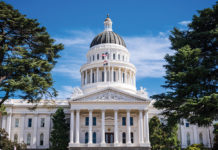A lot is happening along Sonoma County’s 35 miles of Pacific Ocean coastline these days. And this time we’re not talking about the migrating gray whales or the disappointing closure of the dungeness crab season. We’re talking about actions and proposals by the dominant coastal species — humans.
New access rules, entry fees, local zoning proposals and a balance of power at the mighty Coastal Commission are making our beautiful and free coastline anything but “all clear” these days.
Earlier this month California State Parks made a new proposal to bring self-pay and ranger-staffed fee collection stations to six local beaches. While this is a decrease from an original plan to add 14 pay stations, defenders of a free coast are not enthused.
Along with the pay stations would come an erosion of local control, expanding control of the California Coastal Commission — a move unanimously opposed by the county Board of Supervisors.
Meanwhile, county planners continue to review public testimony gathered from five recent workshops on updating the Local Coastal Plan (LCP) which regulates public access, natural resource protections, water quality and future building, development or other human impacts.
The LCP is the local piece of a California Coastal Commission document, aimed to meet the goals of the original California Coastal Act that was born on the Sonoma Coast in 1972 and 1976. The Commission also recently made news when its executive director was removed against the protests of our county board of supervisors, along with hundreds of coastal preservationists. Critics claim this was a power grab by development-friendly forces on the Commission and in Sacramento.
The local coast that historically has been free and public — and off limits to our concrete footprints — could face big changes if a mix of the current proposed fees or rules become law.
Obviously, compromises and expanded cooperation is needed. California’s parks — including our local beaches — need new revenues for proper maintenance and ongoing operations.
The current state proposal would add $8 daily fees and $3 hour parking fees at Bodega Head, Goat Rock, Freezeout Creek, Shell Beach, Stump Beach and Willow Creek. (Currently the only fees are for access to Bodega Dunes, Fort Ross and Wright’s Beach.) The new state proposal removes plans to charge fees at eight smaller beaches between Jenner and Bodega Bay.
This debate is larger than Sonoma County, and some say the outcome could have sea-changing implications at other stretches of the California coastline where development pressures are much greater.
What county supervisors, local parks enthusiasts and a clear majority of the public that testified at the earlier LCP workshops want is to maintain local control.
Concerns about coastal vineyard expansion and new ocean view wineries or inns were voiced at the workshops. County staff offered assurance a new LCP would be subject to the county’s General Plan zoning maps and rules that add further open space, natural resource and agriculture protections. “No substantial changes to land use designations or densities are proposed,” staff reported.
Along our local coast the predominant agriculture is pasture for grazing cows, sheep and other livestock. There are eight dairies and one vineyard in the official Coastal Zone and the California Coastal Act calls for protection of ag lands and discourages conversion of ag lands to other uses.
But right now, many local parks and coast constituencies remain on guard. Public hearings on the coastal plans will be coming to the county supervisors this summer. Then a series of final hearings will be held by the state’s Coastal Commission — the body that many believe was just subject to a pro-development coup.
As it turns out, El Niño may not be the biggest force to visit our coastline this year. Depending on future testimony and political lobbying, the bigger storms could all be human-caused.
— Rollie Atkinson
56.3
F
Healdsburg
April 21, 2025








